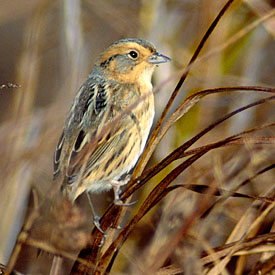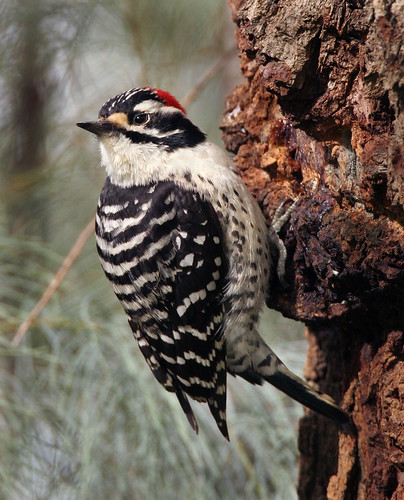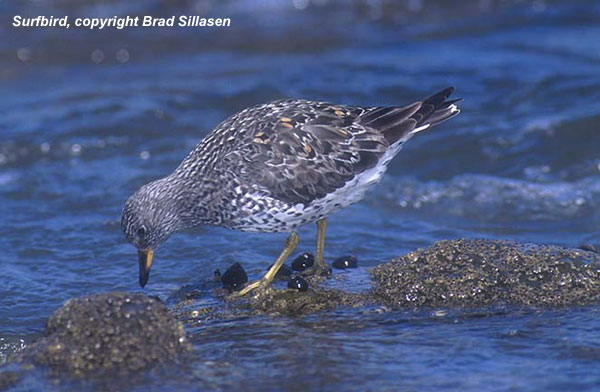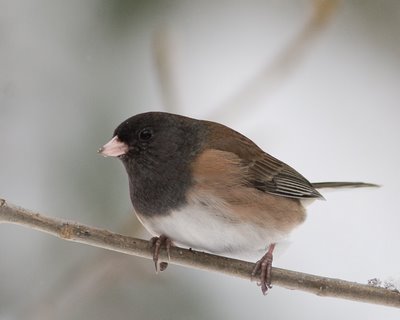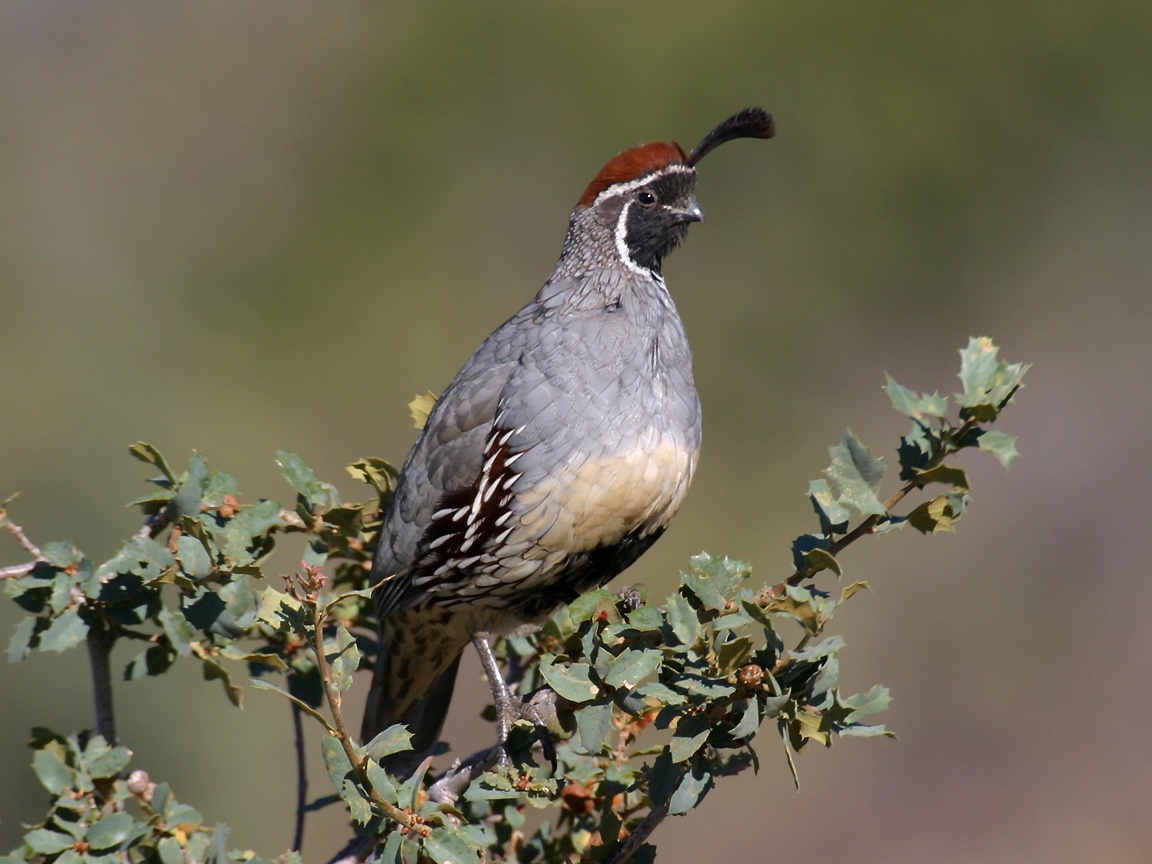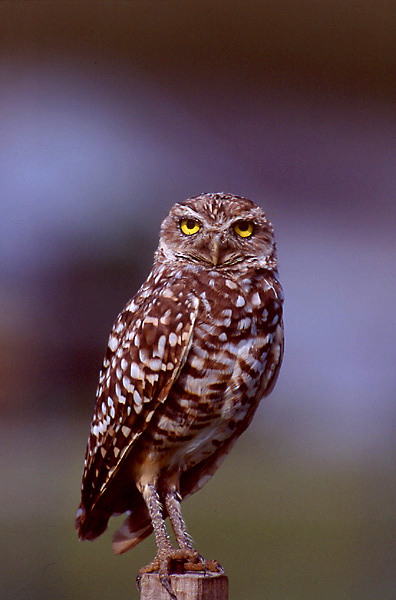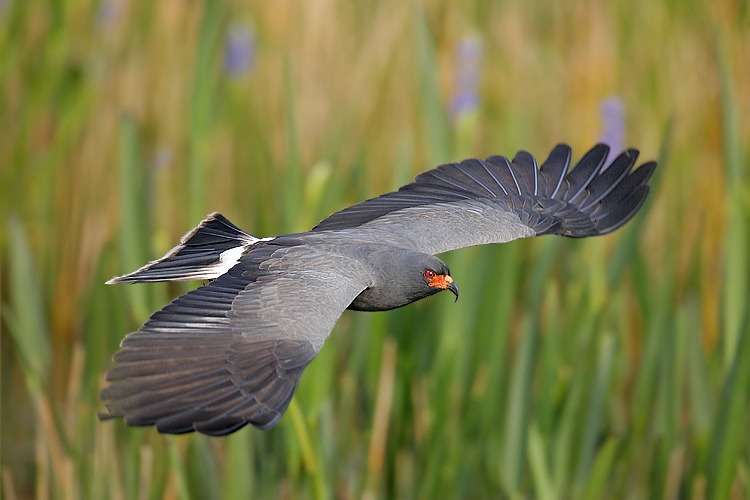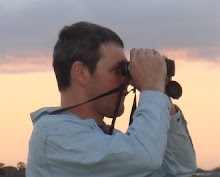 Greater Flamingo
Greater FlamingoPhoto Credit:
ArkiveIt’s not quite spring! Nevertheless, Spring Break was on the calendar, so we packed up the family and headed east – to the Middle East actually - to visit friends. As always, I brought my bird book and binoculars. I never go anywhere without them.
We spent spring break in Dubai, one of the seven emirates of the United Arab Emirates (UAE). I used two guides for the trip,
Birds of the Middle East by Porter et al., and
Birds of the United Arab Emirates by Richardson.
 Birds of the Middle East
Birds of the Middle EastThe Porter guide is the best guide for the region. I was quite happy with it, however, it could use a few improvements. Most noteably of which are the range maps which show only the know breeding areas. Overwintering area and migration regions are not show. Also,a few of the paintings could be improved, such as the Purple Sunbird and the Laughing Dove.
 Birds of the United Arab Emirates
Birds of the United Arab EmiratesThe Richardson guide is a must-have. Although it has line drawings of most and photos of many of the regions birds, I would defer to Porter for IDs. The strengths of the Richardson guide are its limitation to UAE birds, its info on migrations and seasonal abundance, and its descriptions of the key birding sites in the region.
I would also like to thank Steven Feldstein and
Tommy Pedersen for help in sorting out some of my observations.
MizrahWe arrived in town – the Mizrah district - late Friday night. I could hardly sleep, anticipating what yards birds would make their appearance in the morning. Just before 6 am, I heard the first bird song. It sounded very familiar. I suspected that it was a House Sparrow. Not wanting my first Middle Eastern bird to be a House Sparrow, I refused to verify it by sight. I decided to hold out for something else. I didn’t have to wait very long. I was rescued by a
White-cheeked Bulbul.
 White-cheeked Bulbul, Pycnonotus leucotis
White-cheeked Bulbul, Pycnonotus leucotisPhoto Credit:
WikipediaThe
House Sparrow was second. In retrospect, I believe I owe the House Sparrow an apology. The House Sparrows in Dubai were quite interesting in their own right. Relative to the one’s back here in the US, they are somewhat paler in appearance. In addition, they frequently build their nests in trees, like birds are supposed to do, rather than in the space below one’s air conditioner or in a crack in the siding.
Over the course of the next two hours, a few more birds showed up, the highlights being the
Eurasian Hoopoe and the
Crested Lark. These birds were nesting nearby and made regular appearances in the yard. The Hoopoe would typically show up fairly late in the morning, usually alone but sometimes in a pair. They methodically probed the lawn for insects/invertebrates in a manner more becoming a dowitcher or other long-billed sandpiper. I tracked down their nest to a small hole in the base of a neighbors garden wall.
The Crested Larks were relatively abundant in the neighborhood. Although they were observed in the morning, they were much more common in the early afternoon just after the lawn sprinklers shut off. They were also frequent visitors in vacant lots around clumps of vegetation. They mainly procured their food by hopping around the ground, pecking at the dirt or gleaning insects. Occasionally, they would begin singing and fluttering about 20-30 ft. above the ground, struggling to hover. I observed one singing from his hover-spot at over 100 ft. It was quite impressive!
Here are my observations for yard birds for the week:
White-cheeked Bulbul
House Sparrow
Eurasian Hoopoe
Crested Lark
Rock Pigeon
Collared Dove
Common Mynah
Ring-necked Parakeet
Common Swift
Laughing Dove
Graceful Prinia
Red-vented Bulbul
Purple SunbirdSharjah Indian Roller
Indian Roller,
Coracias benghalensisPhoto Credit:
WikipediaLater that morning, we headed to the neighboring emirate of Sharjah to pick-up the kids at the Girl Scout camp. Although we didn’t stay long, I did observe several interesting birds: Laughing Dove,
Long-legged Buzzard, and
Indian Roller.
We then took a ride through the sand dunes in the desert. It’s a bit of a local sport in the Emirates. During the course of the trip, we made several stops the observe wandering packs of camels and take in some of the birds. It was the hottest part of the day, so there were not as many birds as I would have liked. Nevertheless, I made a few interesting observations.
Sharjah Observations:
Laughing Dove
Long-legged Buzzard
Indian Roller
Southern Gray Shrike
Red-wattled Lapwing
Chestnut-bellied Sandgrouse
European Bee-eater
Little Green Bee-eater
Old Town & Dubai Creek House Crow
House Crow,
Corvus splendensSunday, we headed downtown to visit the old souks (markets) along the Dubai Creek. We had to take a small abra across the creek. It is only about a 10 minute ride, but there were plenty of birds – mostly
Black-headed Gulls – to keep one busy. There were also a few gulls of the Black-backed Gull complex, most likely
Steppe Gulls, and one
Socotra Cormorant on the creek. Once on the other side, we toured the souks and then visited the Al Fahidi Fort (now a cultural museum) near the Persian Mosque. The wall of the fort afforded numerous nesting places for swifts, who seemingly took advantage of every one. There were thousands of
Pallid Swifts circling the sky above the fort. In many cases, you could literally reach out and grab one, as they came within arm’s length. Outside the fort and along the banks of the creek,
House Crows were plentiful.
Dubai Creek Observations:
Steppe Gull
Yellow-legged Gull
Socotra Cormorant
Pallid Swift
Red-vented Bulbul
House Crow
Ring-necked ParakeetSafa Park Purple Sunbird
Purple Sunbird,
Nectarinia asiaticaSafa Park is an urban park located along Sheikh Zayed Road, near the downtown business district. It is a manicured garden-style park with mowed lawn, trimmed hedges, and artificial water features. That being said, it had a surprising diversity of birds.
The first bird of the day was an old-world warbler that I could not ID. I got a few brief looks at it, but still could not key it out. It was grayish-brown on the back, and white on the throat, breast, and vent. It was otherwise unmarked. The only “marks” that I could distinguish were a dark narrow pointed bill with a touch of yellow on the lower mandible. It also had a white or buffy supercilium and somewhat darker primaries. It was feeding in the understory of a broadleaf tree. In combing through the field guide and consulting with a experienced birder in the region, my best guess is that it was a
Lesser Whitethroat. But it’s just a guess.
I spent about 2.5 hours in the park, until it got too hot for the kids. In all, I observed about 25 species, the highlights being the
Purple Sunbird, Pied Mynah, Indian Silverbill, and
Egyptian Goose. The Purple Sunbird was the most spectacular bird in the park. The apparently evolved to fill the same niche as hummingbirds by convergent evolution. At a distance or in low light, the Purple Sunbird appears black. However, in full sun, it takes on a metallic steel blue or purple irridesence. Unlike the hummer, it has a melodious song. I observed one singing from a well-lit perch. While singing, it displayed scarlet and yellow pectoral tufts. I found no mention of these in the Porter field guide.
 Pied Mynah
Pied Mynah,
Sturnus contraImage Credit:
WikipediaThe Egyptian Goose was observed in the fenced in bird sanctuary at the back of the park. The goose is a tropical African species that occasionally winters in Cyprus. Its presence in the Arabian peninsula is most likely due to its introduction or escape from exotic collections. It has since established breeding colonies in the region. Pied Mynahs are also apparently introduced.
Safa Park Observations:
Lesser Whitethroat (putative)
Laughing Dove
Red-vented Bulbul
White-cheeked Bulbul
Black-headed Gull
Indian Roller
Pied Mynah
Common Mynah
House Sparrow
Indian Silverbill
Graceful Prinia
Sparrowhawk
Grey Heron
Mallard
Red-wattled Lapwing
Common Sandpiper
Ring-necked Parakeet
Egyptian Goose
White Wagtail
Gray Wagtail
Eurasian Hoopoe
Little Grebe
European Roller
Purple Sunbird
House Crow
Gray FrancolinMushrif Park Little Green Bee-eater
Little Green Bee-eater,
Merops orientalisPhoto Credit:
WikipediaMushrif Park is a natural woodland park located in the Mizhar area, about 10 miles from the Dubai Airport. The park has one main road going straight through the middle and connecting to another road which encircles the park’s perimeter. Many birds can be seen from the car. Getting out and walking around can also flush out a few surprises. I spent about 2 hours in the park. The highlights were the Menetries Warbler, Great Spotted Eagle, Southern Gray Shrike and the Little Green Bee-eater. The Bee-eaters were first spotted on a fence near the maintenace area. Two bee-eaters were perched on the end of an acacia tree, in a manner reminiscent of a shrike or kingfisher. Upon spotting its prey, it would sally forth and snatch it out of the air or glean it off a leaf. Their skillful gathering of food was quite a spectacle to watch.
Mushrif Park Observations:
Laughing Dove
Southern Grey Shrike
Ring-necked Parakeet
Eurasian Hoopoe
House Sparrow
Collared Dove
Red-vented Bulbul
Rock Pigeon
White-cheeked Bulbul
Gray Francolin
Purple Sunbird
Great Spotted Eagle
Menetries Warbler
Graceful Prinia
House Crow
Ras Al Khor Waterbird SanctuaryRas Al Khor Sanctuary is essentially a lagoon at the end of a Dubai Creek. The area is completely fenced off and has guards 24/7. The only access one has to the park is a series of bird blinds – which are quite good. The blinds also have stationed guards.
The number of shorebirds the area draws is quite impressive. I think they must feed the birds or something. I know for a fact that they feed the Flamingos, as the guard showed me the food pellets. Anyway, we stayed for a little more than an hour and got a good look at a number of interesting birds – the highlight being the Greater Flamingos. In all, there were about 5000 flamingo according to the guard. From what I saw, it seemed there were less, but then again we only had a view of part of the lagoon.
In addition to the Flamingo, we also saw a nice variety of other waders and other birds, the highlights being: Cormorant, Common Snipe, Western Reef Heron, Terek Sandpiper, Eurasian Curlew, Temminck’s Stint, Little Stint, Redshank, Greenshank & Greater Spotted Eagle.
 Greater Spotted Eagle
Greater Spotted Eagle,
Aquila clangaPhoto Credit:
Arkive.orgRas Al Khor Observations:
Greater Flamingo
Greenshank
Black-winged Stilt
Cormorant
Common Snipe
Western Reef Heron
Kentish Plover
Terek Sandpiper
Ringed Plover
Greater Spotted Eagle
Little Egret
Great Egret
Little Stint
Eurasian Curlew
Redshank
Temminck's Stint
Common SandpiperMusandam, Oman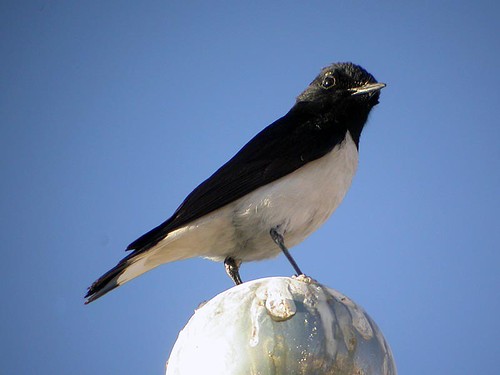 Hume’s Wheatear
Hume’s Wheatear,
Oenanthe albonigraPhoto Credit:
Ardeola's photostreamOn Friday, we went over the border into the northern part Oman, to Musandam. We stayed at the Golden Tulip Hotel, overlooking the Gulf of Oman. There are a number of small islands overlooking the Strait of Hormuz. We hired a dhow to take us out looking for dolphins and such. We saw a number of spectacular birds both on the mainland and out on the islands. The highlights were the Isabelline Shrike, Hume’s Wheatear, Yellow-vented Bulbul, Clamorous Reed Warbler, African Rock Martin and Great Black-headed Gull.
The Great Black-headed Gull was spotted from our hotel balcony. All morning we had large flocks of Black-headed Gulls, but I was careful to scan each one for tag alongs. The Great Black-headed Gull caught my eye because of its size and large yellow bill. I was really excited to see it. There were also a few Socotra Cormorants as well. Outside our hotel there were lots of rocky cliffs attended by feral and domesticated goats. There were also a few birds in the mix. The Isabelline Shrike was perched atop an acacia tree and hunting insects and lizards. I observed it snatch-up at least one small lizard or geckoe.
 Great Black-headed Gull
Great Black-headed Gull,
Larus ichthyaetusPhoto Credit:
Juhani Kyyrö, Virtual BirdOman Observations:
House Sparrow
Laughing Dove
Purple Sunbird
Isabelline Shrike
Socotra Cormorant
Black-headed Gull
Great Black-headed Gull
African Rock Martin
Hume’s Wheatear
Yellow-vented Bulbul
Caspian Tern
Clamorous Reed Warbler
Overall, I observed 61 species, 43 of which were lifers for me. As always, there were a few disappointments. I has several birds on my target list that I did not get the opportunity to see, such as the Masked Shrike, Little Owl and Arabian Babbler, but I can not complain.
 >
>
